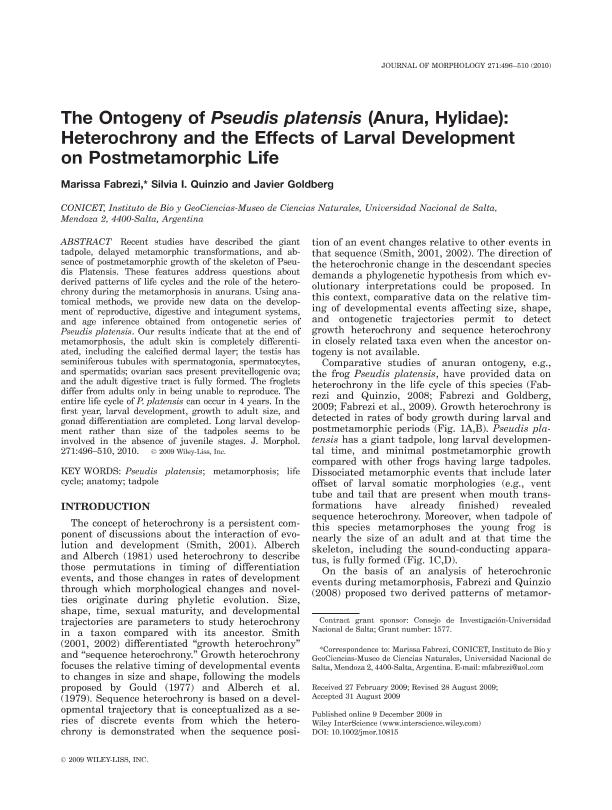Artículo
The ontogeny of Pseudis platensis (Anura, Hylidae): heterochrony and the effects of larval development on postmetamorphic life
Fecha de publicación:
04/2010
Editorial:
Wiley
Revista:
Journal Of Morphology
ISSN:
0362-2525
Idioma:
Inglés
Tipo de recurso:
Artículo publicado
Clasificación temática:
Resumen
Recent studies have described the giant tadpole, delayed metamorphic transformations, and absence of postmetamorphic growth of the skeleton of Pseudis Platensis. These features address questions about derived patterns of life cycles and the role of the heterochrony during the metamorphosis in anurans. Using anatomical methods, we provide new data on the development of reproductive, digestive and integument systems, and age inference obtained from ontogenetic series of Pseudis platensis. Our results indicate that at the end of metamorphosis, the adult skin is completely differentiated, including the calcified dermal layer; the testis has seminiferous tubules with spermatogonia, spermatocytes, and spermatids; ovarian sacs present previtellogenic ova; and the adult digestive tract is fully formed. The froglets differ from adults only in being unable to reproduce. The entire life cycle of P. platensis can occur in 4 years. In the first year, larval development, growth to adult size, and gonad differentiation are completed. Long larval development rather than size of the tadpoles seems to be involved in the absence of juvenile stages.
Palabras clave:
Pseudis Platensis
,
Metamorphosis
,
Life Cycle
,
Anatomy
,
Tadpole
Archivos asociados
Licencia
Identificadores
Colecciones
Articulos(IBIGEO)
Articulos de INST.DE BIO Y GEOCIENCIAS DEL NOA
Articulos de INST.DE BIO Y GEOCIENCIAS DEL NOA
Citación
Fabrezi, Marissa; Quinzio, Silvia Inés; Goldberg, Francisco Javier; The ontogeny of Pseudis platensis (Anura, Hylidae): heterochrony and the effects of larval development on postmetamorphic life; Wiley; Journal Of Morphology; 271; 4-2010; 496-510
Compartir
Altmétricas




